History of the Flathead Lake Biological Station
Flathead Lake Biological Station, University of Montana is one of the oldest active biological field research stations in the United States. It was established near Bigfork in 1899 by its first director, Dr. Morton J. Elrod, UM Distinguished Professor of Biology. It was moved to Yellow Bay in 1908.
Since opening in 1899, students from around the country and all over the world have come to the station to learn firsthand about biology. By 1977, year-round research was being conducted onsite in the Morton J. Elrod Laboratory. In 1981, the construction of the state-of-the-art Schoonover Freshwater Research Laboratory added the ability to conduct onsite chemical water analyses to the suite of research tools employed at the Flathead Lake Biological Station vaulting it into position as one of the finest freshwater research facilities in the country.
The Flathead Lake Biological Station itself is located on a peninsula that shelters Yellow Bay from the main body of Flathead Lake. The grounds include a springbrook and an old growth stand of Douglas fir, ponderosa pine and larch. The station also has land on Bull Island and Polson Bay, and co-manages the Bird Islands.
Students and visiting faculty live in cabins along the lake shoreline or in a winterized lodge/dormitory. The grounds are home to several full-time residents including the director, visiting research staff and a caretaker who live with their families in homes and apartments on the station grounds. Students and faculty dine together in the Prescott Center, a commissary and meeting complex. Four laboratory buildings house the inside biology, limnology, and ecology labs and specialized research projects. Ongoing laboratory services and limnology research is based in the Schoonover Freshwater Research Laboratory.
Since opening in 1899, students from around the country and all over the world have come to the station to learn firsthand about biology. By 1977, year-round research was being conducted onsite in the Morton J. Elrod Laboratory. In 1981, the construction of the state-of-the-art Schoonover Freshwater Research Laboratory added the ability to conduct onsite chemical water analyses to the suite of research tools employed at the Flathead Lake Biological Station vaulting it into position as one of the finest freshwater research facilities in the country.
The Flathead Lake Biological Station itself is located on a peninsula that shelters Yellow Bay from the main body of Flathead Lake. The grounds include a springbrook and an old growth stand of Douglas fir, ponderosa pine and larch. The station also has land on Bull Island and Polson Bay, and co-manages the Bird Islands.
Students and visiting faculty live in cabins along the lake shoreline or in a winterized lodge/dormitory. The grounds are home to several full-time residents including the director, visiting research staff and a caretaker who live with their families in homes and apartments on the station grounds. Students and faculty dine together in the Prescott Center, a commissary and meeting complex. Four laboratory buildings house the inside biology, limnology, and ecology labs and specialized research projects. Ongoing laboratory services and limnology research is based in the Schoonover Freshwater Research Laboratory.
Station History by the Years

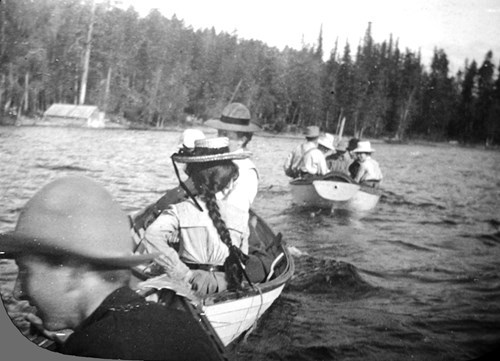
- The University of Montana chartered (1893)
- FLBS founded by Professor Morton J. Elrod in the "River House" on the Swan River at Bigfork (1899)
- FLBS established as the "Sentinel of the Lake" (1899)

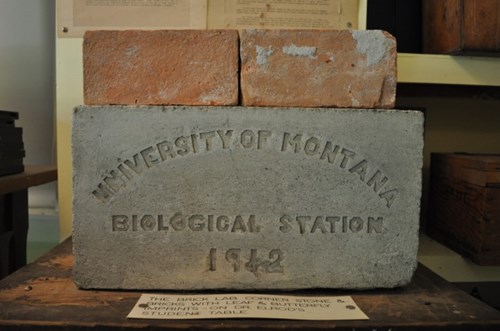
- First organized summer academic session held for college students at FLBS (1901)
- FLBS notoriety and work of Elrod helps establish Glacier National Park (1910)
- FLBS moved to current Yellow Bay property granted to the University of Montana by the Federal Government (1910)
- The “Brick Lab” constructed with $5,000 appropriation from MT legislature (1912)
- First detailed study of Flathead Lake fishes by FLBS scientist Robert L. Young and Elrod (1915)
- “Elrod’s Guide To Glacier National Park” published as official guidebook of GNP (1924)
- Elrod’s last summer as Director and FLBS closes due to lack of funding (1933)
- Prof. Joseph Severy becomes Director and fights to keep the Bio Station relevant and funded during a time of inactivity. (1934-1936)
- Prof. Gordon Castle becomes Director and reopens FLBS with a full slate of classes and a smattering of new buildings on site (1937)


- First field classes for high school biology teachers held at FLBS (1955)
- Professor Richard A. Solberg becomes Director; adds research emphasis to the highly successful summer academic program (1962)
- New Elrod Lab constructed with National Science Foundation funding, replacing the old Brick Lab (1967)
- Professor John F. Tibbs becomes Director, initiates year-round research and maintains student enrollment in the summer session at an all time high (1967)
- EPA funds first large pollution study by FLBS of Flathead Lake (1973)
- Yellow Bay Sewage Treatment Plant built as a demonstration in pollution control (1973)
- EPA funds $4M 5-year Flathead River Basin Study that initiates year-round research (1977)

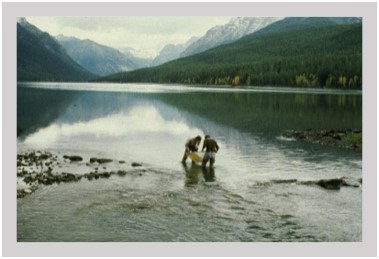
- Jack Stanford becomes Director, initiates ecosystem research emphasis and dramatically increases research funding and a permanent scientific staff (1980)
- Freshwater Research Lab Completed with $850K from Fleischmann Foundation, Reno, NV (1981)
- First lake-wide bloom of pollution algae in Flathead Lake is reported by FLBS scientists (1983)
- MT legislature creates the Flathead Basin Commission to oversee pollution control and authorizes Flathead and Lake counties to ban the sale of phosphorous-containing detergents (1983)
- Dr. Jessie Bierman creates distinguished professorship at FLBS (1986)
- Kokanee fishery in Flathead Lake collapses due to invasion of nonnative Mysis Shrimp (1987)
- “Jessie B,” the FLBS research vessel, is launched with $80K from the NSF (1989)

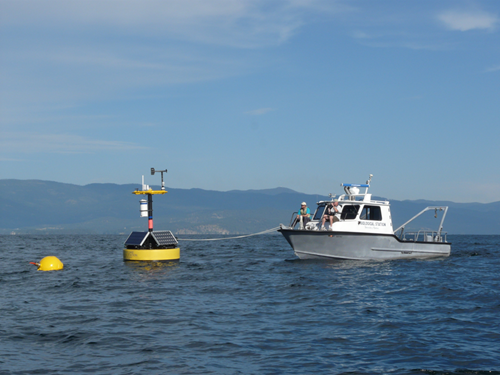
- Second lake-wide bloom of pollution algae occurs, water quality concerns increase (1993)
- FLBS celebrates 100 years as “Sentinel of the Lake”; over 800 valley residents attend the festivities (1999)

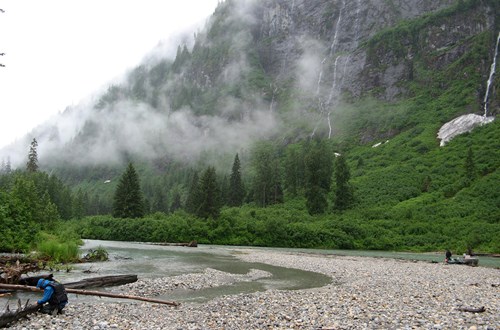
- Distinguished Limnology professorship established through $1M contribution (2000)
- NSF funds $2.6M study of Nyack floodplain biocomplexity (2001)
- Gordon and Betty Moore Foundation awards $1.6M for biodiversity and bioproductivity studies of pristine Pacific salmon ecosystems (2003)
- Director Jack Stanford receives Award of Excellence from the North American Benthological Society (2004)
- FLBS river research results in the creation of the Kol River protected area in Russia, the worlds first salmon preserve (2006)
- NASA funds $2.7M for land-surface freeze/thaw state study, PPL Montana funds $619K for Flathead Lake Northshore erosion projects, and AYK SSI funds $268K to study ecotypic variation in AYK sockeye stocks (2007-2008)
- FLBS is a founding member of Flathead Basin Aquatic Invasive Species working group (2009)

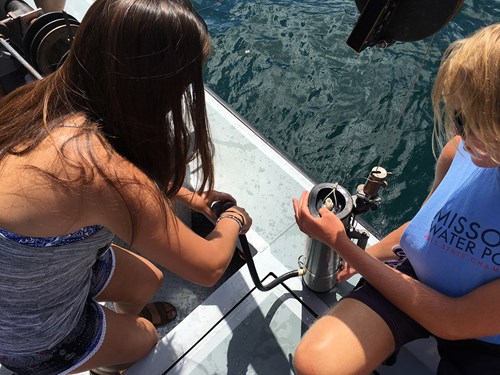
- Research by FLBS and partners results in US and Canadian Government agreement about long-term protection of North Fork Flathead River from energy development and mining (2010)
- FLBS faculty Bonnie Ellis and Jack Stanford publish important scientific paper summarizing 100+ years of biological community changes in Flathead Lake, titled “Long-term effects of a trophic cascade in a large lake ecosystem” in Proceedings of the National Academy of Sciences (2011)
- FLBS develops and installs two environmental sensor networks. One on Flathead Lake (LakeNET), includes nine meteorological stations around the lake of which two are buoys with water quality sensors that use radio and telemetry to push data to long-term databases for pure and applied lake research. The other, RiverNET, is installed on the Middle Fork Flathead Rivers Nyack Floodplain, FLBS’ long-term river research site (2011)
- FLBS implements environmental DNA techniques pioneered by FLBS Professor Gordon Luikart for early detection of Zebra and Quagga Mussels (2013)
- FLBS creates $1M endowment for Flathead Lake Monitoring via community contributions (2014)
- “Jessie B,” the FLBS research vessel, is revitalized with new engines, outdrives, hydraulics, and electronics with a $130K philanthropic donation (2015)
- Jim Elser becomes Director, long-term Director Jack Stanford retires (2015)
- NSF funds SensorSpace at FLBS in invent, manufacture, test, and deploy new environmental sensors for scientific research (2016)
- FLBS initiates undergraduate internship program (2016)
- FLBS expands education program to engage K-12 both at the Station and in local school classrooms (2016)
- FLBS completes new boathouse to house “Jessie B” and other boats with $125K of philanthropic funds (2017)

Your Giving Helps

Research and education milestones on Flathead Lake are primarily accomplished through funding from private donations and philanthropic giving. Please consider giving today to help ensure quality research and opportunities for future generations.
Today

